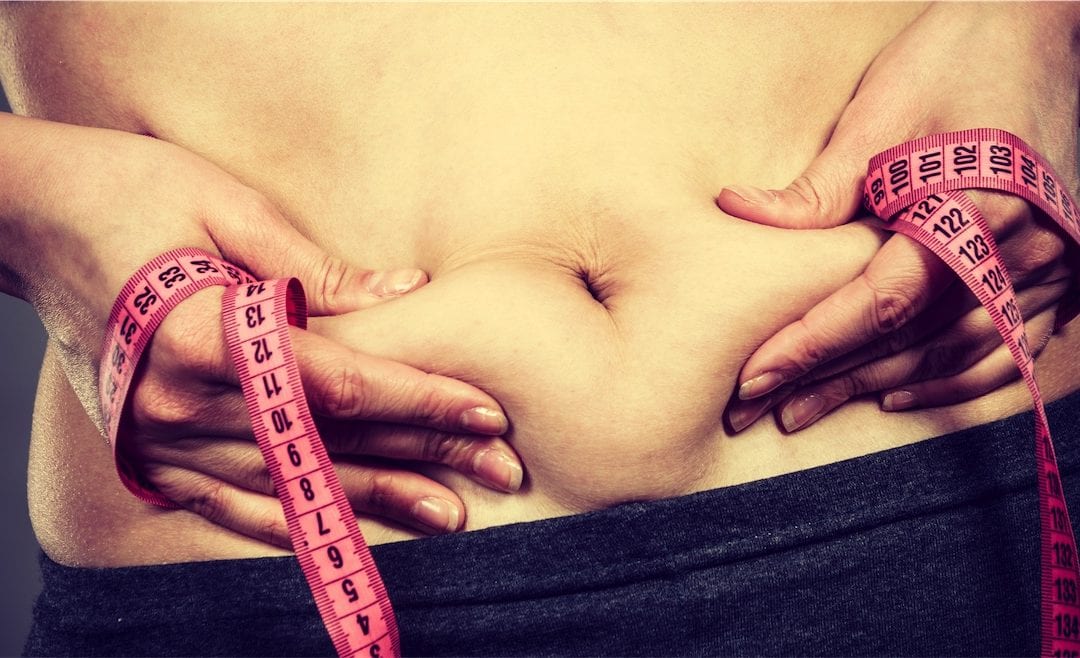The impact of hormone shifts on your metabolism
Are you a woman in your 40s who eats a healthy diet and exercises regularly? Perhaps you’ve noticed a little weight gain on your tummy. Unwanted “love handles” you can’t seem to shift despite changing your diet and increasing your exercise? Welcome to the hormone shift of perimenopause, the ten-year or so transition into menopause.
You might associate perimenopause with hot flushes, mood changes and night sweats. But the hormone changes also impacts your metabolism and the way your body stores fat.
Getting rid of the “muffin top” requires a different and somewhat counterintuitive approach to how you’ve approached exercise and diet up until now.
This post is the first of two. In this post we’ll look at what’s going on with some essential hormones and Part 2 will give you some strategies for how you can optimise your health as you navigate this life transition.
Hormonal drivers of weight gain
Declining oestrogen and progesterone often happens before the development of hot flushes and night sweats. The degree to which this affects you depends on genetics, diet and lifestyle factors.
The role of oestrogen
Oestrogen suppresses appetite
You may have noticed your appetite increases before your period. That’s when oestrogen is naturally is at it’s lowest ebb. When oestrogen is low, the neurotransmitter serotonin declines, and this can impact on your mood. You may crave foods high in carbohydrates. Carbs liberate stored serotonin and this lifts your mood.
Oestrogen suppresses appetite through interactions with the appetite hormones leptin and ghrelin1. It’s part of the reason some women gain weight on hormonal contraception. Synthetic oestrogen doesn’t have the same effect on appetite as your natural hormones.
Oestrogen increases energy expenditure
Oestrogen’s actions on insulin and your thyroid boost metabolism. With less oestrogen, your metabolic rate can drop. Lower oestrogen also means you burn less fat during exercise and sleep. Decreased oestrogen levels also change your fat balance from subcutaneous fat (just under your skin, you can jiggle it) to visceral fat (around your organs). This kind of fat contributes to inflammation which is in itself a factor in weight gain2.
The role of progesterone
The other primary reproductive hormone, progesterone is made when you ovulate. As a woman progresses through perimenopause, she may not ovulate every cycle, or if she does, less progesterone is produced. Non-reproductive functions of progesterone include boosting metabolic rate and creating the calming neurotransmitter GABA. Low levels of GABA are linked to anxiety3. Progesterone also supports sleep, and adequate, refreshing sleep is vital to weight management.
The role of cortisol
As if the changes to oestrogen and progesterone weren’t enough to deal with, cortisol weighs in on the action as well. Cortisol is often the primary culprit of “muffin top” creation. The increased sensitisation to stress in your 40s coincides with a time where many women have elevated pressure due to family commitments, career and personal relationships4.
Stress is exacerbated by intense exercise and dieting – the most common approach many of us would use to lose the fat.
Moderate to intense prolonged exercise and restrictive eating patterns (fasting and low carbohydrate diets) raise cortisol. Sustained high levels of cortisol increase insulin, encourages fat storage- especially around the abdomen and lowers immunity. You’ll get every bug going around. Cortisol increases during exercise but should decline within an hour of ceasing. If it remains elevated because you’re not a creature of calm in other areas of your life, it creates a perfect fat storing storm. Your body thinks tough times are coming so it will hold on to everything it has to avoid the imagined future famine.
Hypothyroid or Hypercortisol?
Cortisol also has a relationship with your thyroid. High cortisol blocks the activity of your active thyroid hormone (T3) and reduces your metabolic rate5. You’ll feel dog-tired and like you’re struggling for energy. You may have all the symptoms of hypothyroid but still, record a normal range TSH on a blood test. Often TSH is the only test used to assess thyroid function.
The pregnenolone steal
Cortisol, oestrogen and progesterone share molecule called pregnenolone as a building block. There is only a limited supply of pregnenolone, and your body will preferentially use it to make cortisol at the expense of other hormones6. You can end up exacerbating the effects of a lowered production of oestrogen and progesterone with cortisol that’s being a little bit too greedy.
Gee, it sounds like all bad news. What can I do?
The key is balance
As much as we like to believe in magic, silver bullet solutions, hormones are complex molecules both in themselves and in their interplay with each other. An analogy often used is an orchestra – when everyone is playing the correct notes at the right volume and in time with everyone else, it’s a thing of beauty. However, if one musician starts doing their own thing you’ve got trouble. Balance is essential when it comes to hormones.
The good news is there are diet and lifestyle approaches you can use to support oestrogen, progesterone and keep cortisol in check.
Stay tuned (oops, bad pun!) for Part 2 to find out more.
References:
- Lizcano F, Guzmán G. Estrogen Deficiency and the Origin of Obesity during Menopause. Bio-Med Res Int. 2014;2014(757461):1-11.
- Palmer BF, Clegg D. The sexual dimorphism of obesity. Mol Cell Endocrinol. 2016;15:113-119. doi:10.1016/j.mce.2014.11.029.The.
- Khoudary SR El, Shields KJ, Janssen I, et al. Cardiovascular Fat , Menopause , and Sex Hormones in Women : The SWAN Cardiovascular Fat Ancillary Study. J Clin Endocrinol Metab. 2018;100(February):3304-3312. doi:10.1210/JC.2015-2110.
- Vicennati V, Pasqui F, Cavazza C, Pagotto U, Pasquali R. Stress-related development of obesity and cortisol in women. Integr Physiol. 2009;17(9):1678-1683. doi:10.1038/oby.2009.76.
- Edwards LD, Heyman AH, Swidan S. Hypocortisolism: An Evidence-based Review. Intergrative Med. 2011;10(4):30-38. www.proquest.com. Accessed May 5, 2013.
- Guilliams T, Edwards L. Chronic Stress and the HPA Axis : Clinical Assessment and Therapeutic Considerations. Stand Pointe Inst Nutraceutical Res. 2010;9(2):2-12. http://www.pointinstitute.org/wp-content/uploads/2012/10/standard_v_9.2_hpa_axis.pdf. Accessed October 20, 2013.

Need help with your hormones?
Norelle Hentschel is an experienced Naturopath with a clinic in Stones Corner, Brisbane who enjoys supporting her clients to reach their health goals.
Want more articles like this?
Receive a monthly digest of natural health information to help you become “health” sufficient!
PS. Your inbox real estate is precious, and we will never annoy you with sales pitches or share your details with anyone else. One email a month — that’s it.

